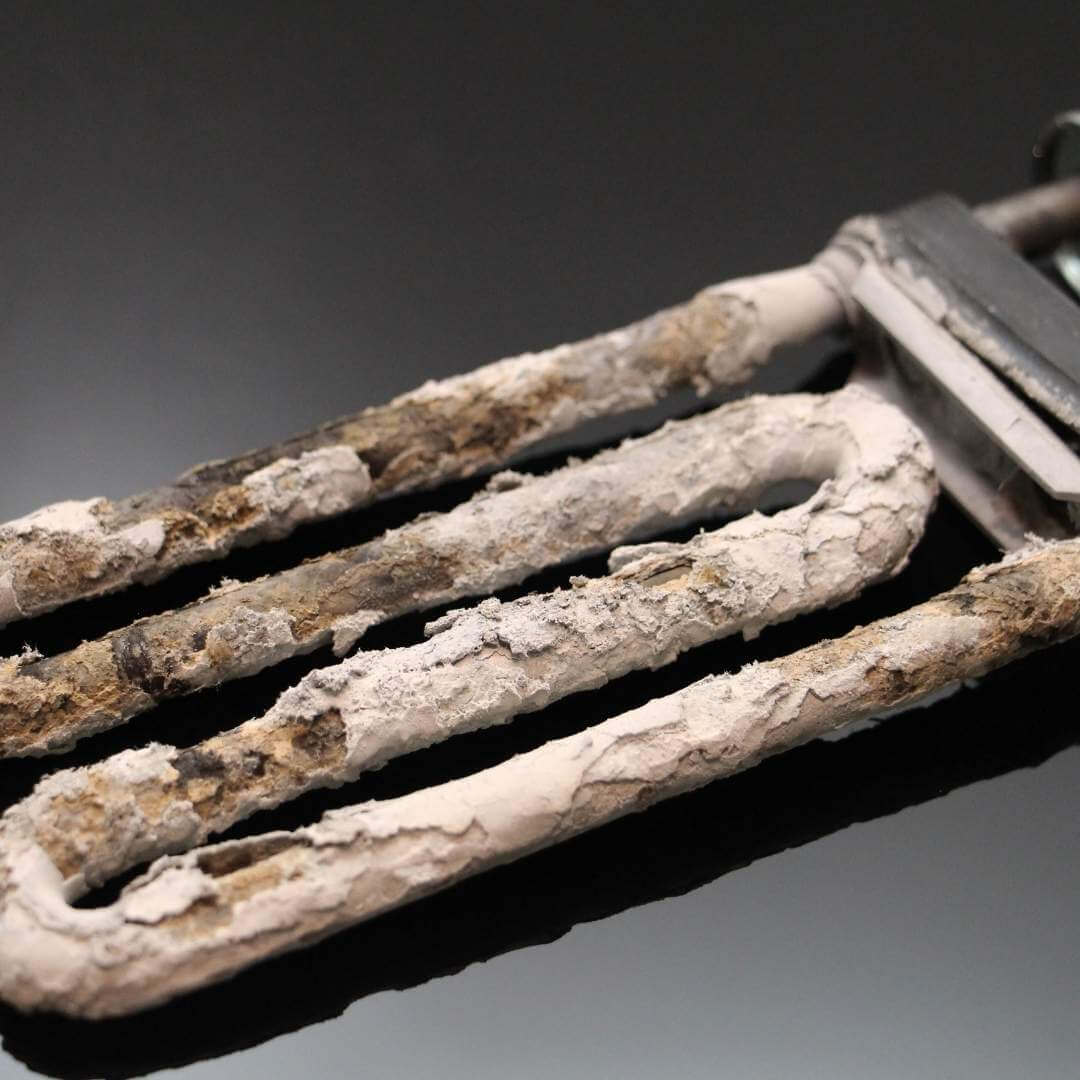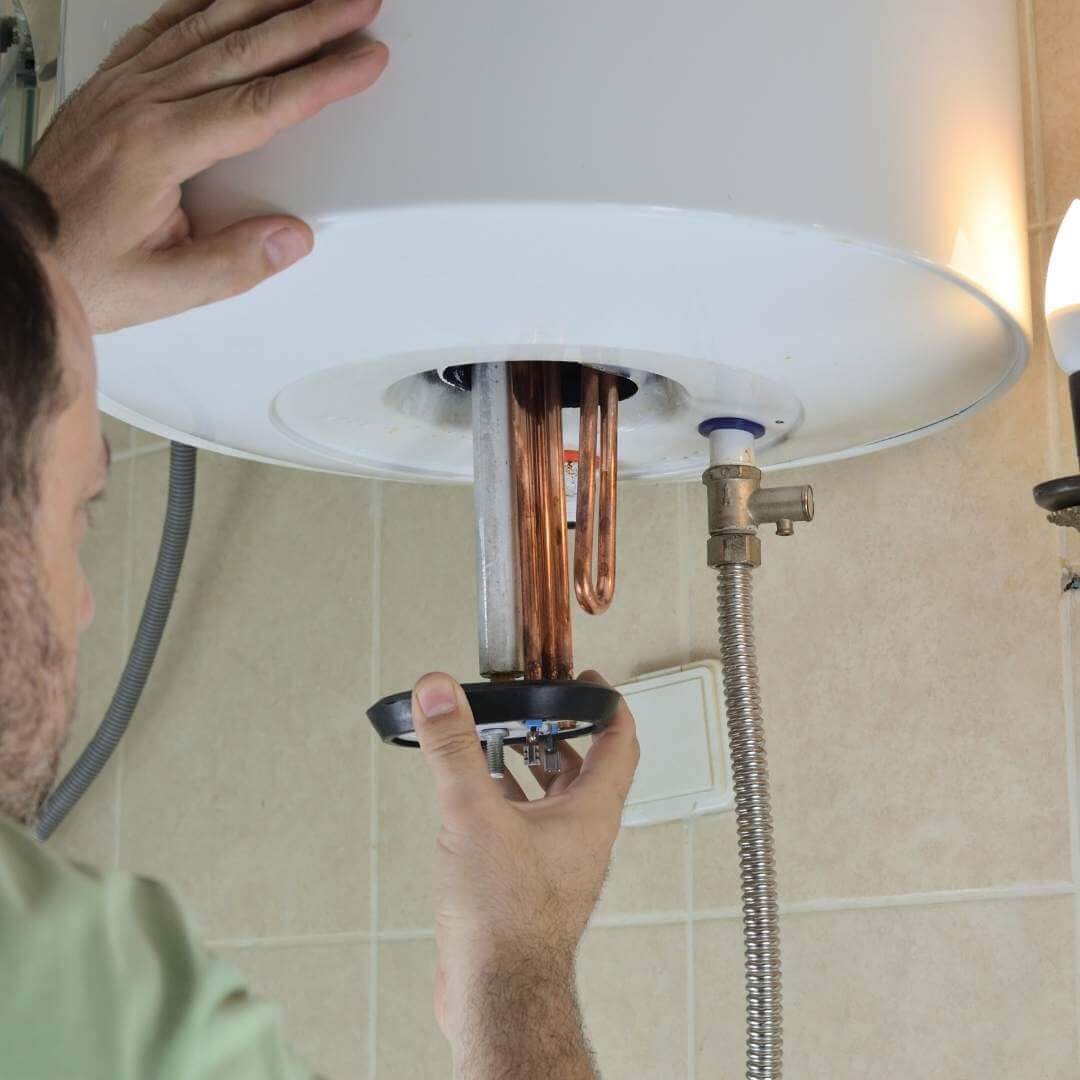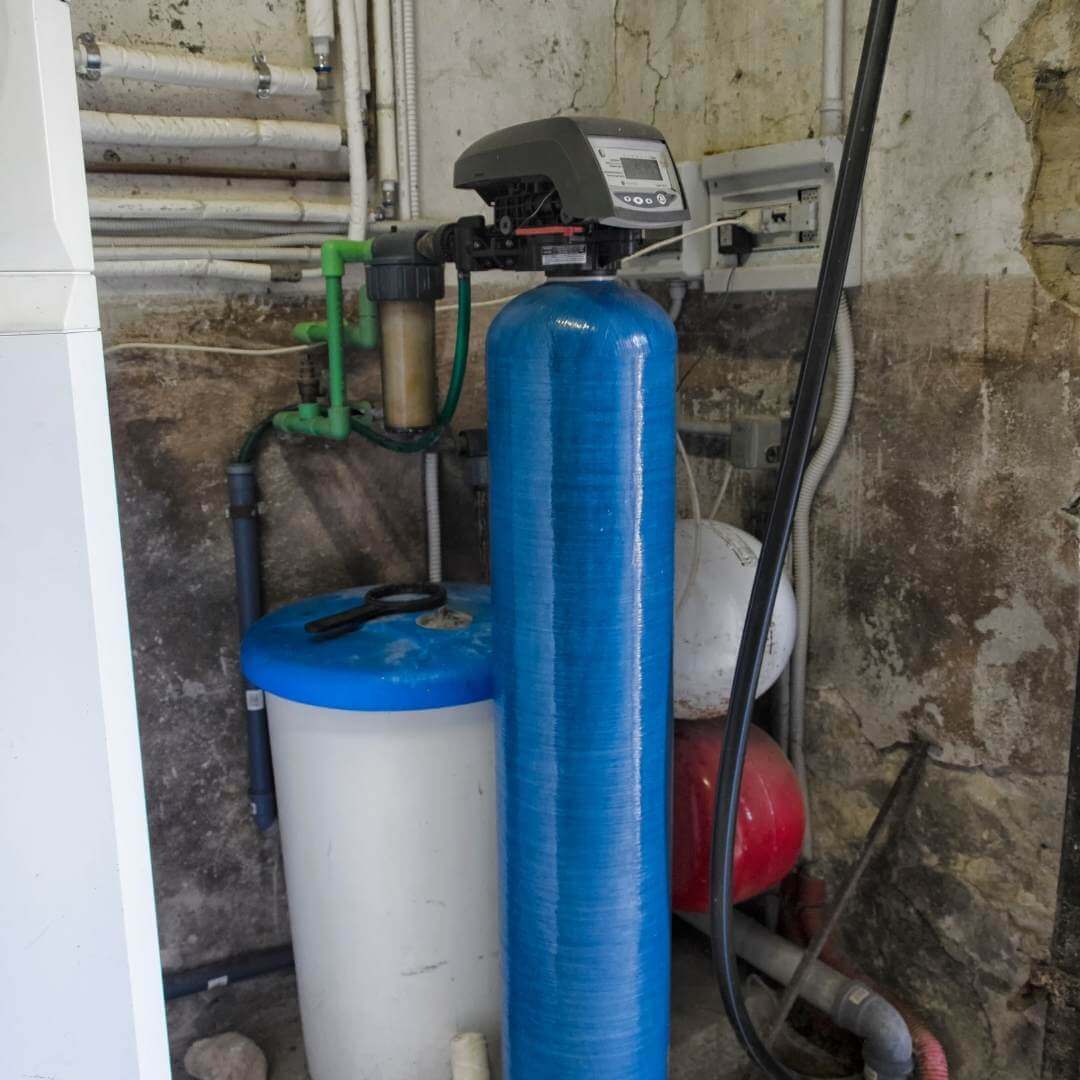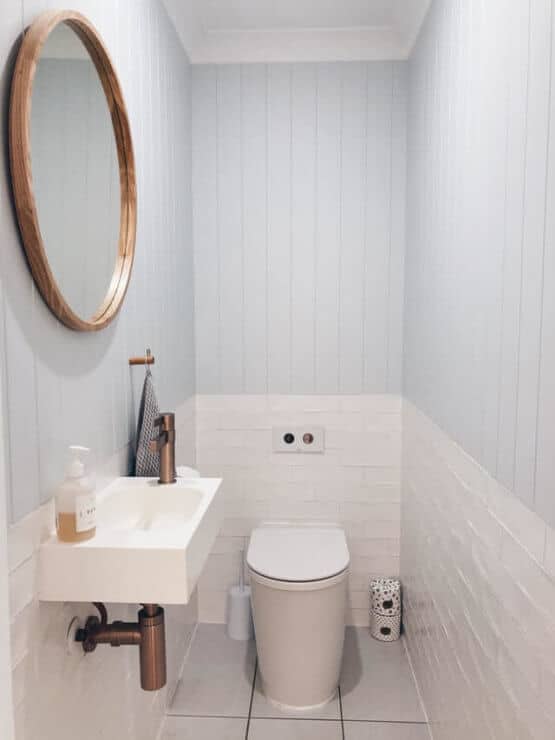The water that runs through our pipes isn’t entirely pure. It’s filled with various minerals that can build up over time. So, how do you break the sediment out of a hot water heater and can you even do this on your own?
Fortunately, most of the time, you can deal with hot water heater sediment problems on your own. There is no need to call the plumber for every little thing that goes wrong.
If you want to learn how do you break the sediment out of a hot water heater, you’re on the right spot.
We’ll instruct you on flushing your water heater, while also giving you some useful tips and tricks on other sediment removal methods.
Why Do I Have Sediment in My Water Heater?

To understand how do you break the sediment out of a hot water heater, you need to know why do you have sediment build-up in the first place.
As mentioned before, the water inside your tap is filled with natural minerals that then get into your water heater. Unless you have a tankless water heater, these minerals will deposit at the bottom of the tank. The most common two of these minerals are calcium and natrium. [1]
Other minerals include:
- Magnesium
- Kalium
- Copper
- Iron
- Manganese
- Zink
- Phosphorus
How Water Heater Sediment Symptoms
Sediments can cause a lot of problems to your water heater, which can even lead to the water heater failure. They can cause the growth of bacteria, which, combined with the high amount of heat, can be very damaging.
These sediments might also cause the bottom of the tank to deform, causing leaks. This is why you need to get rid of them as soon as possible.When you have too much sediment in water heater, you might experience some of these signs:
- Lack of hot water
- Fluctuating water temperature
- Banging noise coming from the pipes and the water heater itself
- Bad odor in the water
- Leaks near the water heater drain valve
- It takes long time for the water heater to heat up
The best way to see if you have sediment in the water heater is to run the hot water and check out whether you have any of the symptoms above. These could indicate that you have a hot water heater clogged with sediment.
How Do You Break the Sediment Out of a Hot Water Heater?

The most common way for getting rid of sediment out of a hot water heater is to flush it. Ideally, you’d want to flush your water heater once a year.
Here is the guide on how to remove calcium buildup in water heater (as well as to get rid of other minerals) by flushing your water heater:
Step One
First off, you need to turn off your water heater. If you have an electric water heater, you can do this by turning off the power switch. For the gas one, the thermostat should be set to the pilot setting. This will allow you to cool down your water heater. Of course, this means that no one in your house should do anything that requires hot water, such as taking a shower, doing laundry or washing the dishes.
Step Two
Next, you should also turn off the cold water valve. If you wonder why you need to turn it off – the cold water is what goes into the tank for the water heater to warm it out. Once you’ve turned off the cold water, the tank can be fully drained.
While this isn’t a mandatory step, there’s one thing you need to keep in mind. If you don’t turn off the cold water valve, the water will keep on moving into the water heater tank and go down the drain. This will significantly increase your bills.
Step Three
This is the simplest step of them all. Just sit back and allow the water heater to cool down. This can take up to two hours, depending on the size of your tank.
Step Four
Locate the drain valve on your water heater. It’s usually on the side of the tank. Then, attach a hose to it. The hose has to be entirely threaded. Otherwise, you’re risking ending with leaks later on. [2]
Keep in mind that the end of the hose has to be put in a heat-proof backed. Another good idea is to put it down the drain. Otherwise, you might end with floods. Of course, make sure that your drain isn’t at risk of overflowing.
Step Five
If you’re worried about a vacuum that might form in the pipes, you should open faucets around your house. Place them at the ‘hot’ setting, then let them run. It might seem as if there isn’t a lot of water present, or if the pressure is low. This is perfectly normal; You’ve turned off the cold water, so the heater cannot warm up the water.
Step Six
Take a flathead screwdriver and turn on the valve. Be gentle and slow, so there are no leaks. This will also keep the drain or the bucket that you’re draining water into from overflowing. By doing this, the water will drain off any sediment build-up.
Step Seven
Finally, once all the sediment has been drained, you can turn off the drain valve. Then, you can remove the hose safely, and once again turn the cold water valve on. This is the moment you should also turn the water heater’s heating element on.
Keep in mind that you should keep all the faucets you’ve turned on in the previous steps. Wait until they return to a normal flow, then turn them off. Then, wait for about half an hour for the heater to heat the water. Your unit will likely heat everything much faster than usually, considering that you’ve learned how to dissolve sediment in water heater successfully!
How to Prevent Sediment in Water Heater

While learning how to flush the sediment out of the water heater is important, it’s always better to prevent it than to deal with it. Fortunately, there are a few useful tips that can help you with just that
- Use water softener. The sediment build-up is much more likely to happen in hard water. If you soften your water, there will be fewer minerals, which means that it will take much longer for them to sediment in the water tank.
- Flush the water tank annually. Even if you don’t think that there is enough sediment build up, flushing the tank can help you prevent a greater damage.
- Treat your water heater with an adequate cleaner after flushing. This will help you dissolve any persistent sediment build up and ensure your water heater is in its best possible condition.
- Make sure your pipes are in good condition. Copper and iron pipes can lead to increased amounts of minerals in water, especially if they are old. Switching to PVC pipes is an expensive but a good solution in preventing your water to become harder than it normally is.
- Be on the lookout for any signs of sediment build up. It’s always easier to treat things before they get out of hand, and the same goes for this issue. The sooner you react, the easier the process will be.
Bottom Line
Many people wonder: “How do you break the sediment out of a hot water heater?” The truth is, this isn’t a very difficult process and most people can do it on their own. All it takes is a bit of water heater flushing and a bit of patience.Of course, sometimes people don’t act until it’s too late. Sediment build-up can cause a lot of damage to your water heater and the entire plumbing system.
This might be too much for an inexperienced individual. There is no shame in asking a plumber for help. However, if you can do it on your own, and you have the time to do so – don’t hesitate! It will save you a lot of money, and you might even feel good about yourself later on.

Michael Davis is a heating & plumbing expert who currently works as independent contractor in SC. He also writes for Plumbertip.
For almost 10 years he worked on various plumbing tasks across South Carolina.


